Warning: The following article is mostly composed of numbers and musings.
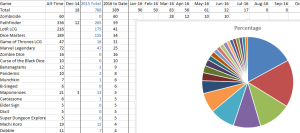
Last year I played a total of 788 games. Of those, 265 were of the Pathfinder ACG, 175 were the Lord of the Rings LCG, and 155 were of Dice Masters – in other words, those 3 games made up roughly ¾ of my total gaming for the year.
So far, 2016 is looking very different – 389 games played between January and June is not too far removed from last year (369), but the distribution is very different.
The most played games still feature some familiar faces. Although our most-played game of the year is a new entry – Zombicide: Black Plague with 60 sessions, Pathfinder is only just behind with 59 plays, then LotR LCG on 41 and Dice Masters with 34.
Even allowing for this new arrival, there’s a much broader spread of what’s being played: whereas the top 3 games last year accounted for 75% of what I played, the top 4 games this year make up fractionally under half (49.9%). Even these figures may be a bit generous – almost half of those games of LotR came on a single evening as I tried without success to beat a particularly irritating quest. Dice Masters is more-or-less in freefall, as our local community vanishes and I struggle to find opponents.
Rising Stars
Just behind the leading pack, you can find a growing number of games in the teens and twenties of play-throughs: the Game of Thrones ACG and Marvel Legendary have both passed 25, having been discovered (or released) part-way through last year, they have kept a steady turnover, without really threatening the top 4 (Legendary is probably held back by its labour-intensive set-up, and Game of Thrones play is always capped by the need to build a functional deck and arrive at the FLGS at the same time as other players). Zombie Dice is a new entrant in the mid-teens, where it’s comfortably holding its own.
There was previously a line here about another game which appeared to have broken into this group, but it was disqualified when it transpired that I had typed a number in the wrong row of my spreadsheet…
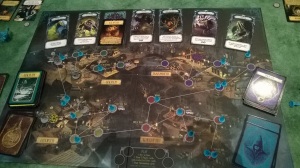
The real change this year though, is in the single digits. Last year, I played a total of 58 games, but only 12 of them 5 times or more, and 30 of them (i.e. more than half) only once. This year, I’ve played 44 games so far, but already 17 of those have been played 5 times or more, and only 10 of them have been played just the once (for now). The selection of games being played is broadening.
Intent
Obviously, some of the changes in game-play have a fair amount of intentional behaviour behind them – regulars will know that I’m trying to play ten games ten times in 2016, which is something I didn’t do last year (I wasn’t trying, it just happened that 7 games got played ten times or more, and the others didn’t), so this definitely encourages me to look more often at games I like but haven’t played that much. There’s also the issue of trying to empty my “un-played” pile, which is causing the dust to be brushed off a fair number of old games – I’m trying to avoid this turning in to a token “play it once” activity, both in terms of playing games more than once (at least the shorter ones) and in terms of seriously considering whether I want to play that game again.

Reviews also deserve a mention at this point, as you can’t really review a game without playing it a fair few times, but only 1 of the 9 games I’ve reviewed so far has really taken the house by storm (Zombicide), so that’s another whole set of games that are getting played “a few” times, but not loads and loads.
Fallen Favourites
Despite all of that though, I still think that there are issues with what have historically (at least for 2015 and the second half of 2014) been our “main” games.
Lord of the Rings LCG has been a family favourite for 5 years now, but as I’ve commented at length elsewhere, it feels like it’s reached a point where they have over-complicated the game, and increased the difficulty to the point where sitting down to play is just painful. Our local meet-up for the game has also missed a few sessions (I don’t quite know what happened for June, I think we all just forgot…) which doesn’t help, and the sense that you need to custom-build a deck for every quest you tackle makes a game at short-notice a real challenge. [Do I keep the 4-player decks built in the hope that friends will come over and want to play? Or build for 2 and push to do that mid-week instead of one of the newer games? Sadly the days are gone when you could have a set of decks ready that did both]. I had this come up on Saturday, when a friend suggested a game, and I had to indicate that I had nothing ready that would give us a viable game.
Pathfinder is still a solid game – As noted above, it’s still very near the top of the “most-played” list for the year, [there’s an ongoing tussle with Zombicide] and we’re still picking up the Class Deck expansions as they come out (looking forward to lots of Goblins in the near future).

That said, there are still factors weighing against the game. First of all, it’s worth noting that Pathfinder is in something of a fallow period in terms of the material they’re releasing: after a hectic first 2 ½ years of the game, they have opted for a long hiatus between the 3rd and 4th Adventure Paths, to let people catch up with existing content – as a result, there’s definitely a lack of urgency as we re-play earlier paths, no pressure to be finished in time to play the next thing out.
That said, I think my enthusiasm for this game took more of a blow from the final stages of the 3rd AP, Wrath of the Righteous: there was certainly intent on the part of the designers to make it “big” and “challenging” but it also felt badly scaled (the “Army” henchman are ridiculous against survivors groups of 6), and the excitement of having everything constantly turned all the way up to 11 quickly wore off – we still haven’t finished that path with our second character group, and I’m honestly not sure whether we’ll ever bother. Definitely a place where – for us – difficulty went a step too far.
Dice Masters I like. Given the chance, I’d still be playing this every week, but our local group has basically disappeared, with two people selling up, and others just not able to make it down very often. As a 2-player head-to-head, this one is never going to get much time at home, and working at UK Expo meant that playing in Nationals Wasn’t an option. I’m hoping that I’ll be able to get some games of this in over the next month or two, but I largely let the Civil War set pass me by, and I’m not going to be spending money on the upcoming Green Arrow/Flash set unless something major changes.
The Future
Overall, I think the spread of this year’s gaming has been healthier than last: playing a broader range of games seems like a sensible way to go. As an added bonus, the fact that I’m doing review work means that I’m able to balance a lot of my costs in acquiring new stuff, either by getting the games I want as review copies, or at the very least selling or trading them to offset my costs. The only thing I’m really lacking is having as much time to play games as I do to write about them.

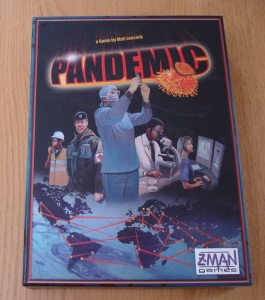
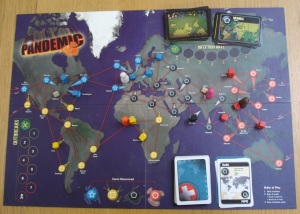
 At the end of their turn, they draw 2 cards from the deck – mostly these will be cards representing the cities on the board, which can be discarded for faster travel, or collected as a set in order to develop a cure (you need 5 city-cards of a single colour to cure the corresponding disease). However, mixed in to this deck will be 1-off special actions, and epidemics: cards which punish the players by increasing the infection rate, returning the infection discard pile (see below) to the top of the deck, and generally increasing the pressure on players.
At the end of their turn, they draw 2 cards from the deck – mostly these will be cards representing the cities on the board, which can be discarded for faster travel, or collected as a set in order to develop a cure (you need 5 city-cards of a single colour to cure the corresponding disease). However, mixed in to this deck will be 1-off special actions, and epidemics: cards which punish the players by increasing the infection rate, returning the infection discard pile (see below) to the top of the deck, and generally increasing the pressure on players.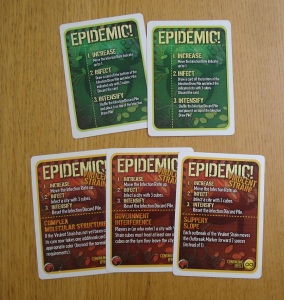
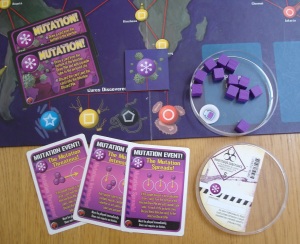 The Mutation is a 5th disease, with purple cubes – it only spawns via event cards, but as it has far fewer cubes available, it’s much easier to run out of if you’re not paying attention, as well as adding a 5th requirement for victory (i.e. all 5 diseases must be cured).
The Mutation is a 5th disease, with purple cubes – it only spawns via event cards, but as it has far fewer cubes available, it’s much easier to run out of if you’re not paying attention, as well as adding a 5th requirement for victory (i.e. all 5 diseases must be cured).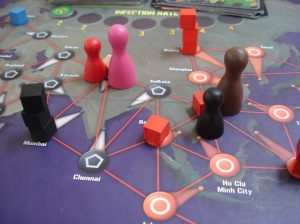 On the Brink was the only expansion made for the first printing of the game – it was then re-released with new graphic design, meaning that anyone wanting to mix in future expansions either needed to re-buy the game, or sleeve all their cards. There was definitely a good argument for a new printing: the player pawns for the original game were massive, and look slightly comical next to those from the expansions, but the card-backs change was a pain. We weren’t keen enough on the game to re-buy, or to sleeve, and this was what broke the chain of expansion-buying for us.
On the Brink was the only expansion made for the first printing of the game – it was then re-released with new graphic design, meaning that anyone wanting to mix in future expansions either needed to re-buy the game, or sleeve all their cards. There was definitely a good argument for a new printing: the player pawns for the original game were massive, and look slightly comical next to those from the expansions, but the card-backs change was a pain. We weren’t keen enough on the game to re-buy, or to sleeve, and this was what broke the chain of expansion-buying for us. 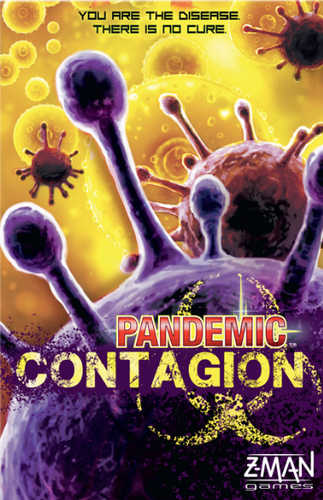 As I mentioned above, the Bio-terrorist role is one we’ve never bothered with. Clearly though, somebody out there wanted to be bad-guys, and they got their chance with
As I mentioned above, the Bio-terrorist role is one we’ve never bothered with. Clearly though, somebody out there wanted to be bad-guys, and they got their chance with 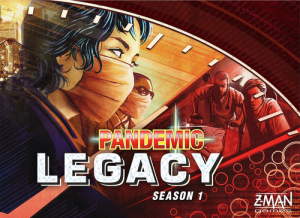 2015 brought us
2015 brought us 
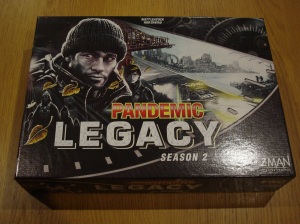 Given the success of Legacy Season 1, it was inevitable that Season 2 would eventually follow. This was a Post-Apocalyptic setting, where players are concerned with discovering corners of the world that have been lost, and keeping the surviving cities supplied with food, water etc.
Given the success of Legacy Season 1, it was inevitable that Season 2 would eventually follow. This was a Post-Apocalyptic setting, where players are concerned with discovering corners of the world that have been lost, and keeping the surviving cities supplied with food, water etc.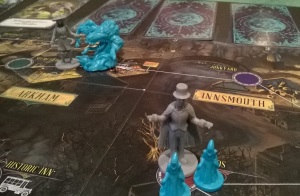
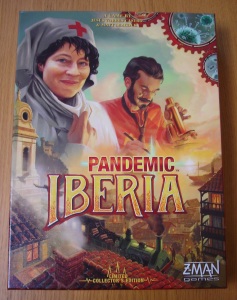 Pandemic Iberia
Pandemic Iberia Continuing the tradition that started with Iberia, we got another Pandemic game late in 2017, themed around that year’s World Championship location. Rising Tide challenges you to save the Netherlands from flooding. Lots of pieces, a tiny bit fiddly, but definitely offering a unique challenge.
Continuing the tradition that started with Iberia, we got another Pandemic game late in 2017, themed around that year’s World Championship location. Rising Tide challenges you to save the Netherlands from flooding. Lots of pieces, a tiny bit fiddly, but definitely offering a unique challenge. This was my 3rd UKGE. I first went in 2009, when it was still a comparatively new event, to play in a couple of tournaments (Command and Colours Ancients, and Memoir ’44 – I finished second in one of them, although I can no longer recall which). There was then a long hiatus before last year, when I went back on the Friday and Sunday for the Dice Masters tournament, missing out on the top 8 in the Nationals thanks to my own inability to remember what energy-type one of my cards was (for anyone interested, my opponent had Venom fielded, who gave all my non-fist characters -2A -2D. Forgetting that Black Widow is fist energy, and thus unaffected, I thought that she had between 0 and 1 defence, which led to her getting repeatedly KO-ed before she could do anything)
This was my 3rd UKGE. I first went in 2009, when it was still a comparatively new event, to play in a couple of tournaments (Command and Colours Ancients, and Memoir ’44 – I finished second in one of them, although I can no longer recall which). There was then a long hiatus before last year, when I went back on the Friday and Sunday for the Dice Masters tournament, missing out on the top 8 in the Nationals thanks to my own inability to remember what energy-type one of my cards was (for anyone interested, my opponent had Venom fielded, who gave all my non-fist characters -2A -2D. Forgetting that Black Widow is fist energy, and thus unaffected, I thought that she had between 0 and 1 defence, which led to her getting repeatedly KO-ed before she could do anything)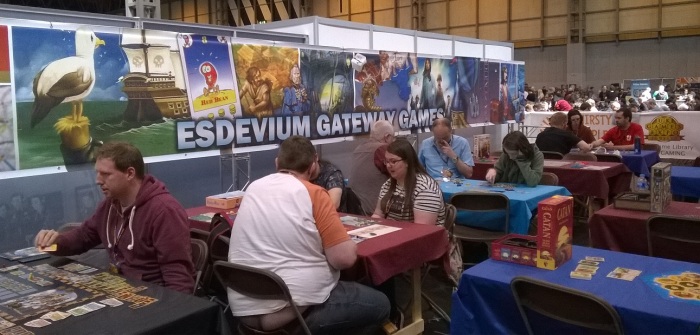
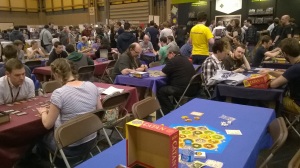 Thankfully, things picked up, and by lunch-time we were busy, meaning that I spent most of my time explaining games, rather than just hovering awkwardly. I checked some games into the Bring & Buy on my lunch break, had a first glance at some of the stands, and was generally feeling a lot better.
Thankfully, things picked up, and by lunch-time we were busy, meaning that I spent most of my time explaining games, rather than just hovering awkwardly. I checked some games into the Bring & Buy on my lunch break, had a first glance at some of the stands, and was generally feeling a lot better.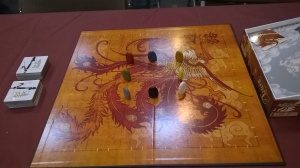
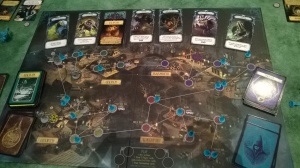 Aside from getting paid to go to Expo, there are other benefits to doing work for the UK’s main game distributor. After a stern series of warnings (may be paraphrasing, but in my head it was somewhere along-the-lines of “return this in perfect condition, or be shot at dawn”) a friend managed to borrow a preview copy of Pandemic: Reign of Cthulhu for the Saturday evening. This won’t be released for another month or so and, aside from the dozen copies being raffled over the weekend, is basically the only one in the UK right now, so this was a big deal.
Aside from getting paid to go to Expo, there are other benefits to doing work for the UK’s main game distributor. After a stern series of warnings (may be paraphrasing, but in my head it was somewhere along-the-lines of “return this in perfect condition, or be shot at dawn”) a friend managed to borrow a preview copy of Pandemic: Reign of Cthulhu for the Saturday evening. This won’t be released for another month or so and, aside from the dozen copies being raffled over the weekend, is basically the only one in the UK right now, so this was a big deal.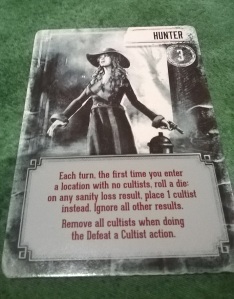 The mechanic for trading cards is less irritating than original Pandemic, Awakening an Old One is more interesting and involved than simply suffering an outbreak, and the way that characters can go insane, with their abilities changed by the experience feels very thematic. Fittingly, I was the only one to actually go insane on the night (my character, not her controller), but we managed to eke out a last-gasp win. All-in-all, good fun, and I look forward to playing it (or reviewing it: hint, hint Dan or Nigel if you’re reading this…) when it’s released properly.
The mechanic for trading cards is less irritating than original Pandemic, Awakening an Old One is more interesting and involved than simply suffering an outbreak, and the way that characters can go insane, with their abilities changed by the experience feels very thematic. Fittingly, I was the only one to actually go insane on the night (my character, not her controller), but we managed to eke out a last-gasp win. All-in-all, good fun, and I look forward to playing it (or reviewing it: hint, hint Dan or Nigel if you’re reading this…) when it’s released properly.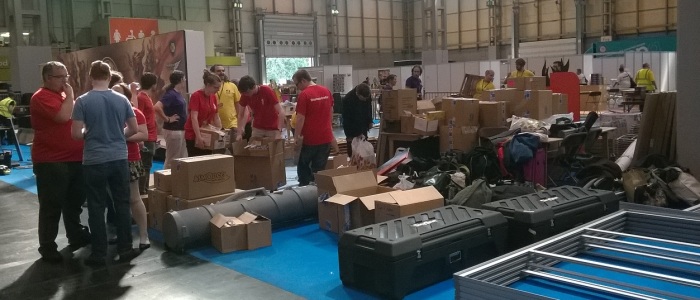 I wouldn’t say that it was a perfect con by any stretch of the imagination. The signposting at the NEC is terrible, there was a disappointing lack of bins, and at £12 per day just for parking, I’d have to seriously consider whether I could afford to go to something like this if I were paying my own costs. Probably the biggest pain was the difficulty of finding some free space in the evening for gaming. Overall though, I think UKGE is a great thing, with a good mix between familiar games and new, between just trying things out and playing at the highest level – it’s a slight shame that the tournaments take far too long for anyone to really do that AND get a deep experience of the show, but that’s just the reality of life. Expo does a great job with what it has to work with. Long may it continue, and I’ll probably see some of you there in 2017…
I wouldn’t say that it was a perfect con by any stretch of the imagination. The signposting at the NEC is terrible, there was a disappointing lack of bins, and at £12 per day just for parking, I’d have to seriously consider whether I could afford to go to something like this if I were paying my own costs. Probably the biggest pain was the difficulty of finding some free space in the evening for gaming. Overall though, I think UKGE is a great thing, with a good mix between familiar games and new, between just trying things out and playing at the highest level – it’s a slight shame that the tournaments take far too long for anyone to really do that AND get a deep experience of the show, but that’s just the reality of life. Expo does a great job with what it has to work with. Long may it continue, and I’ll probably see some of you there in 2017… Perhaps more worryingly, the zero plays list also remained largely undisturbed this month – nothing made it to the table which hadn’t done so before, although it was somewhat refreshing to see games like Dixit which started the year on the endangered list getting a repeat run-out.
Perhaps more worryingly, the zero plays list also remained largely undisturbed this month – nothing made it to the table which hadn’t done so before, although it was somewhat refreshing to see games like Dixit which started the year on the endangered list getting a repeat run-out.
 Getting rid of Monkey Dash was clearly a sensible thing to do (see above for the not-played-in-nearly-seven-years), but it was harder than I expected. As I was talking to the guy who took it off me, I found myself wanting to hold on to it. Even after I’d agreed the deal, part of me wanted to change my mind (he’s posted his half now, so I can’t back out).
Getting rid of Monkey Dash was clearly a sensible thing to do (see above for the not-played-in-nearly-seven-years), but it was harder than I expected. As I was talking to the guy who took it off me, I found myself wanting to hold on to it. Even after I’d agreed the deal, part of me wanted to change my mind (he’s posted his half now, so I can’t back out).